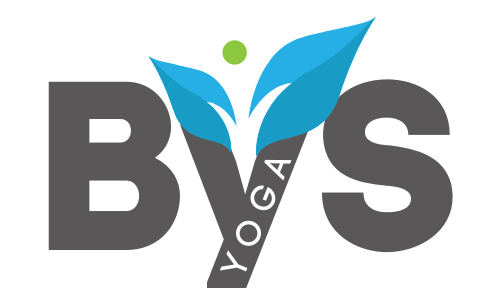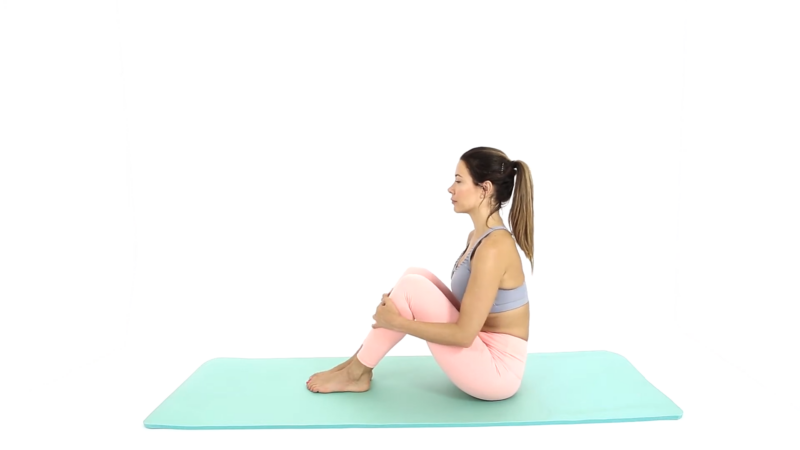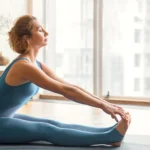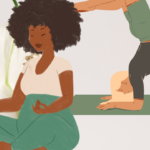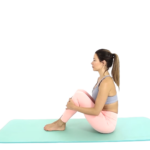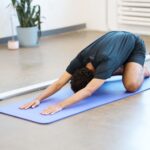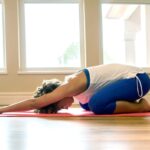Starting yoga might seem overwhelming with the variety of poses and sequences. But what they don’t tell you is that you don’t need to twist yourself into a pretzel to experience the benefits of yoga (I know, I thought the same).
Seated yoga is a great way to ease into the practice, especially if you’re just starting out. You can work on your flexibility, build strength, and find some mindfulness without even getting up from your chair or mat. Ready to get started?
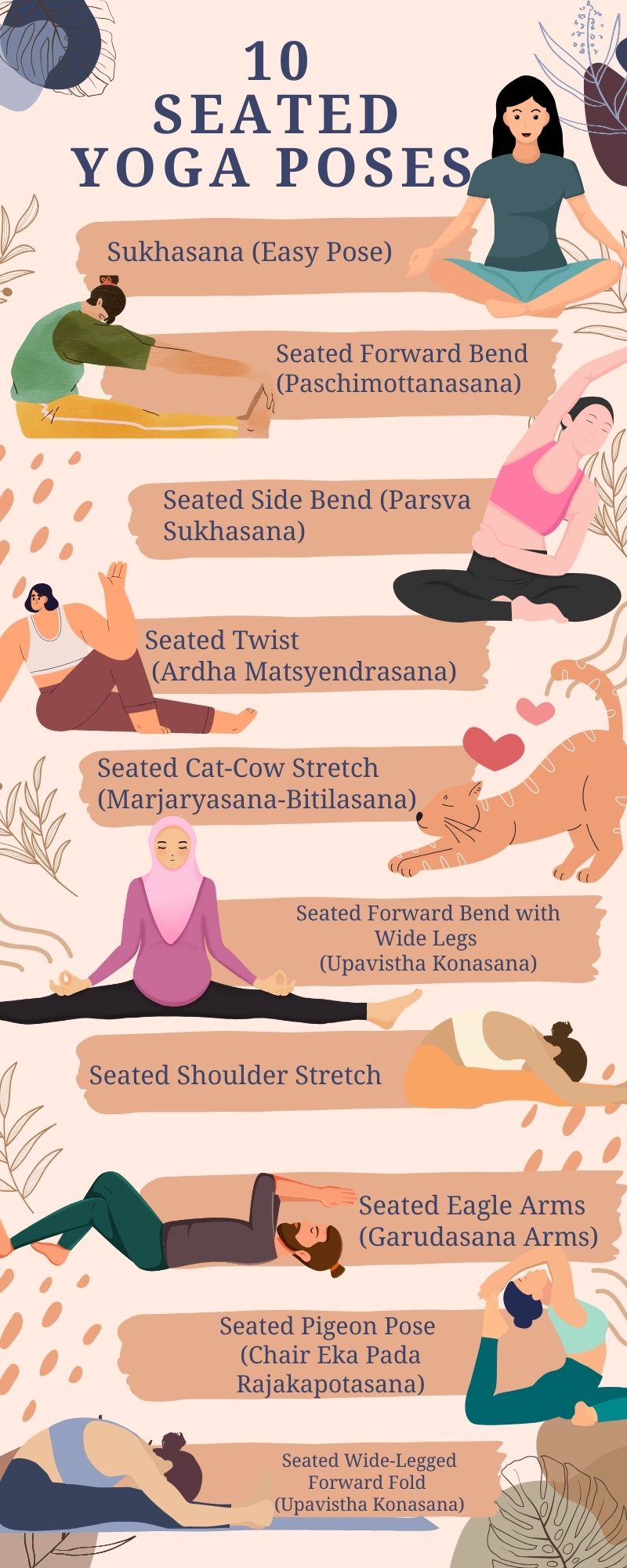
1. Sukhasana (Easy Pose)
Sukhasana, or Easy Pose, is often the starting point in yoga sessions. It’s a simple cross-legged sitting position that helps you focus on your breathing and center your mind. This pose promotes calmness and stretches your hips and lower back.
How to do it
- Sit on the floor with your legs crossed and your spine straight.
- Rest your hands on your knees with your palms facing up or down.
- Close your eyes, take deep breaths, and focus on your breathing.
2. Seated Forward Bend (Paschimottanasana)
Paschimottanasana, or Seated Forward Bend, stretches the entire back of your body, from your spine to your hamstrings. It’s a great pose for releasing tension and improving flexibility.
How to do it
- Sit with your legs extended straight in front of you.
- Inhale, lengthen your spine, and as you exhale, slowly bend forward from your hips, reaching for your toes.
- If you can’t reach your toes, hold onto your shins or use a strap.
3. Seated Side Bend (Parsva Sukhasana)
Seated Side Bend, or Parsva Sukhasana, is a gentle stretch that targets the sides of your body, helping to improve flexibility in the spine and alleviate tension in the lower back.
How to do it
- From Sukhasana (Easy Pose), place your left hand on the floor beside you.
- Inhale, raise your right arm overhead, and as you exhale, lean to the left.
- Keep your chest open and your gaze forward or upward.
- Hold for a few breaths, then switch sides.
4. Seated Twist (Ardha Matsyendrasana)
The Seated Twist, or Ardha Matsyendrasana, is excellent for increasing spinal flexibility and stimulating digestion. It’s a simple pose that provides a deep stretch to your spine and shoulders.
How to do it
- Sit with your legs extended.
- Bend your right knee and place your right foot outside your left thigh.
- Inhale and lengthen your spine, and as you exhale, twist to the right, placing your left elbow outside your right knee.
- Hold for a few breaths, then switch sides.
5. Seated Cat-Cow Stretch (Marjaryasana-Bitilasana)
The Seated Cat-Cow Stretch is a variation of the traditional Cat-Cow pose done on all fours. It’s a great way to warm up your spine and relieve tension in your back and neck.
How to do it
- Sit with your feet flat on the floor, hip-width apart.
- Place your hands on your knees. Inhale, arch your back, and lift your chest for Cow Pose.
- Exhale, round your spine, and tuck your chin to your chest for Cat Pose.
- Continue to alternate between the two with your breath.
6. Seated Forward Bend with Wide Legs (Upavistha Konasana)
Upavistha Konasana, or Seated Forward Bend with Wide Legs, is a deep stretch for your inner thighs and hamstrings. It’s perfect for improving flexibility in your lower body.
How to do it
- Sit with your legs extended wide apart.
- Inhale and lengthen your spine.
- As you exhale, slowly walk your hands forward, bending from the hips.
- Keep your back straight and go as far as you comfortably can.
7. Seated Shoulder Stretch
The Seated Shoulder Stretch is a simple but effective pose for releasing tension in the shoulders and upper back, areas that often hold stress.
How to do it
- Sit comfortably with your spine straight. Inhale, reach your arms overhead.
- As you exhale, interlace your fingers and flip your palms up towards the ceiling.
- Hold for a few breaths, then release.
8. Seated Eagle Arms (Garudasana Arms)
Seated Eagle Arms is a variation of the traditional Eagle Pose. This pose focuses on stretching the shoulders, upper back, and arms.
How to do it
- Sit with your spine straight.
- Extend your arms in front of you, then cross your right arm over your left at the elbows.
- Bend your elbows and bring your palms to touch (or as close as possible).
- Lift your elbows and stretch your fingers upward.
- Hold for a few breaths, then switch sides.
9. Seated Pigeon Pose (Chair Eka Pada Rajakapotasana)
Seated Pigeon Pose is a great way to stretch your hips and glutes without needing to get down on the floor. It’s particularly beneficial for those who spend a lot of time sitting.
How to do it
- Sit in a chair with your feet flat on the floor.
- Cross your right ankle over your left knee.
- Flex your right foot to protect your knee.
- Inhale, lengthen your spine, and as you exhale, gently lean forward from the hips.
- Hold for a few breaths, then switch sides.
10. Seated Wide-Legged Forward Fold (Upavistha Konasana)
The Seated Wide-Legged Forward Fold is a deeper version of the Seated Forward Bend with Wide Legs. This pose intensifies the stretch in your inner thighs and hamstrings.
How to do it
- Sit with your legs extended wide apart.
- Inhale, lengthen your spine, and as you exhale, fold forward from the hips, reaching your hands towards your feet or the floor in front of you.
- Keep your back straight and your toes pointing upwards.
In Summary
Seated yoga poses are a great way for beginners to ease into yoga. They offer a simple introduction to the practice, focusing on flexibility, strength, and mindfulness without needing much experience or gear. Yoga isn’t about pushing yourself to the max; it’s about listening to your body and moving with purpose.
